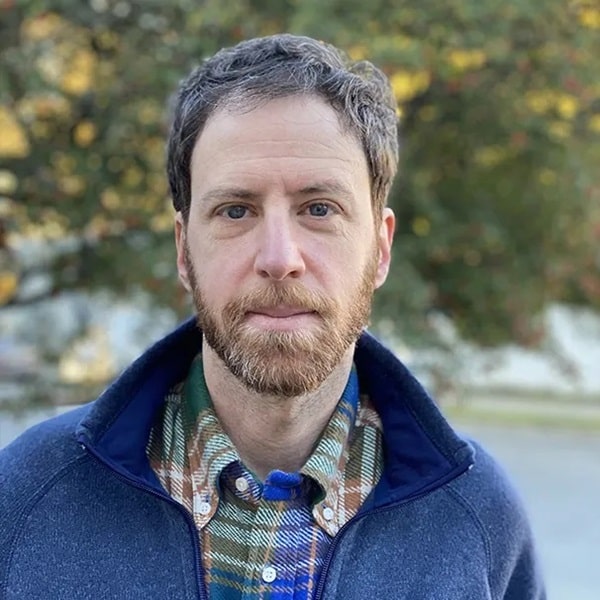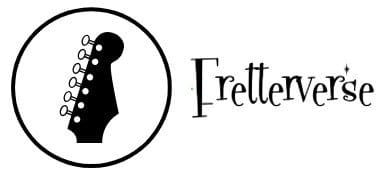Introduction to Major Triads
Unlocking the fretboard’s secrets started with a revelation: major triads transformed my playing. Before this pivotal discovery, my progress felt stagnant. But once I delved into the world of chord theory and understood the powerful simplicity behind major triads, my guitar journey truly began. Today, I invite you to join this exploration. Together we’ll unravel how these essential building blocks of music theory for guitar can elevate your sound to new heights.
Major triads are not just foundational; they are the versatile tools that shape the sonic landscape of countless genres. In this article, I’ll guide you through the nuanced journey of constructing and applying major triads on guitar, ensuring each step is grounded in the rich tapestry of my own musical experiences. By the end, you’ll see how these three-note wonders can open up a new world of musical possibilities, transforming the way you approach your guitar playing and song creation.
Construction of Major Triads
Foundation of Major Triads
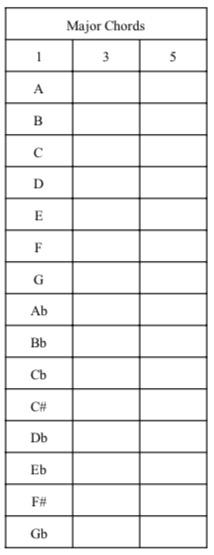
What if I told you that the secret to sounding great on guitar lies in knowing just three simple notes? At the heart of the major scale, these notes—known as the root, third, and fifth—form what we call the major triad. This triad serves as a cornerstone in understanding music theory and aids in the ability to construct harmonies on the guitar. By mastering these fundamental components, you unlock pathways to creative expression and versatility in your playing.
Drawing from my extensive experience, I’ve seen firsthand how grasping the essence of the major scale is transformative. It informs your understanding of major triads, which are the bedrock of many musical styles. With this foundation, you’ll not only be able to construct major triads effortlessly but also weave them into your music creatively. As we delve into building and recognizing triads across the neck, you’ll gain profound insights into their practical application.
Building Major Triads on the Guitar
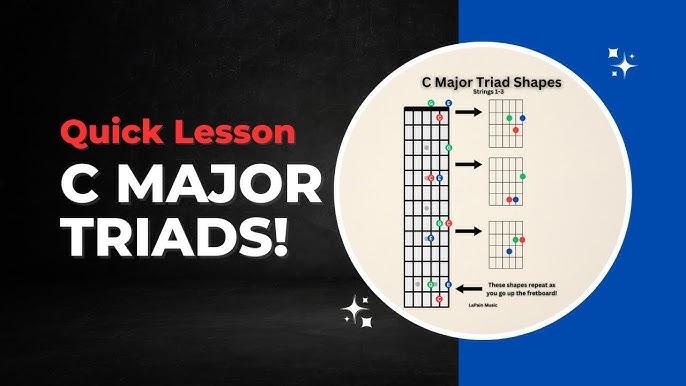
Have you ever felt overwhelmed by guitar chords? Let’s simplify it with major triads! Mastering these basic building blocks is crucial as they are the foundation upon which more complex chords are built. With years of teaching under my belt, I emphasize hands-on techniques for beginners to build major triads on the guitar effectively.
First, as you embark on this journey, understand that a major triad consists of three notes: the root, the major third, and the perfect fifth. On the guitar, lessons often overwhelm beginners with vast chord shapes; however, focusing on simple triad shapes can immediately enhance your understanding of chord construction with just a few finger placements. By locating these notes across the fretboard, you’ll learn techniques that pave the way to unlocking various chords and scales.
Building these triads not only demystifies guitar chords but also enhances your fretboard familiarity. As we delve deeper, this foundation will seamlessly lead into exploring triad shapes and understanding the CAGED system, reinforcing your guitar journey.
Triad Shapes and The CAGED System
Understanding the CAGED System
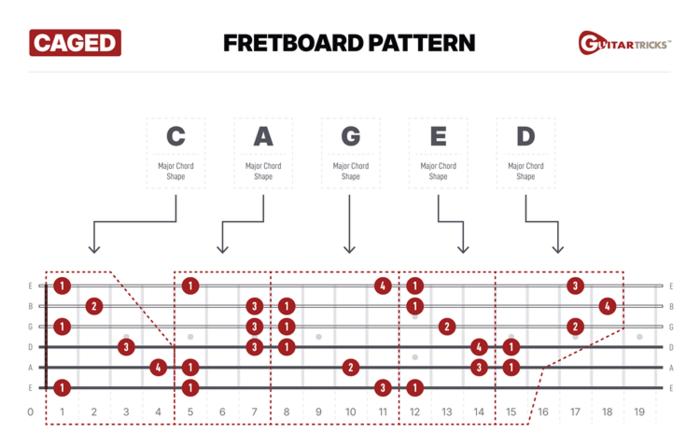
What if you could visualize the entire guitar neck through just five shapes? This concept lies at the heart of the CAGED system, revolutionizing how we perceive the guitar fretboard. As we dive deeper, you’ll uncover the magic behind this system that organizes the guitar neck into five simple yet powerful chord shapes: C, A, G, E, and D.
Understanding the CAGED system is pivotal, especially when working with triad shapes. This approach provides a logical framework, helping guitarists navigate the complex landscape of the fretboard with ease. The CAGED system is not just a method; it’s an eye-opener, revealing how these shapes interconnect, creating a map that simplifies chord theory.
Through my journey with guitar, I’ve found that mastering the CAGED system is essential for efficient navigation, quickly uncovering all possible major triad positions across the neck. Armed with this knowledge, you can effortlessly transition from one triad shape to another, enhancing your playing with fluidity and precision.
Finding Triad Shapes Across the Neck
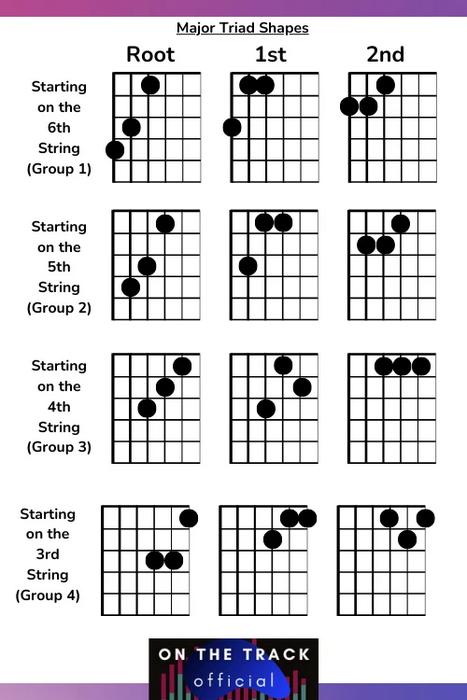
Can you imagine effortlessly switching between triad shapes across the entire fretboard? This skill fundamentally transforms your guitar playing, allowing for seamless transitions and dynamic expression. As we delve into finding triad shapes across the neck, I want to share how integrating this approach with the foundational triad shapes and the CAGED system boosts flexibility in playing.
Understanding guitar chords truly broadens when we practice the CAGED system, which breaks the neck into familiar shapes. My expertise suggests that identifying these shapes as small clusters of notes simplifies complex maneuvers. The key lies in recognizing and interconnecting these shapes for any major triad—G, C, D, and beyond—across the neck. This approach not only maximizes versatility but also integrates flowing chord movements seamlessly.
As this section unfolds, it becomes a cornerstone for mastering major triads. Progressing logically from understanding the CAGED system, it sets the stage for exploring triad inversions, eventually incorporating them into your personal playing style.
Triad Inversions
Types of Triad Inversions

Did you know that changing the order of notes in a triad can completely alter its sound and application? This is the essence of triad inversions. As I draw from my composition experience, I can’t stress enough how vital these inversions are in crafting musical diversity. At its core, a triad consists of three notes: root, third, and fifth. By rearranging these, we obtain three distinct types of inversions, each offering unique sonic characteristics.
The first inversion places the third as the lowest note, adding a sense of suspension and movement. The second inversion positions the fifth at the base, producing a stable yet open sound. Each rearrangement unlocks new possibilities, showcasing how these inversions contribute depth to your guitar playing. This approach allows me, and you, to break out of traditional patterns, enhancing our creative expression with every chord progression.
As we explore these types of triad inversions, it’s vital to not just understand their theory but also to apply them across the neck, broadening your chordal vocabulary. Mastering these inversions can seamlessly transition to the practical exploration of these concepts, as we delve into practicing inversions on the guitar in the upcoming section.
Practicing Inversions on Guitar
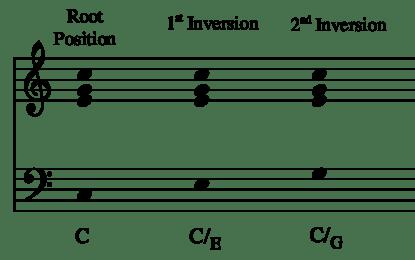
Are you ready to take your guitar skills to the next level with triad inversion techniques? Mastering inversions on the guitar is not just about knowing where to place your fingers; it’s about unlocking a full spectrum of harmonic possibilities and enhancing your musical vocabulary. Inversions involve rearranging the notes of a triad to offer different voicings on the guitar neck, providing new textures and a deeper understanding of chordal structure.
In approaching these inversions, precise finger placement becomes crucial. With practical guitar exercises curated from my teaching experience, I guide you through systematically breaking down the positions and transitions necessary to fluidly navigate inversions. Emphasizing clarity and control, each exercise is designed to reinforce understanding and foster dexterity, turning the theoretical knowledge into an intuitive skillset.
Transitioning from identifying these shapes to implementing them in your playing allows for richer musical expression. As you continue to explore and apply these techniques, you’ll notice how they serve as a bridge to the next sections on incorporating triads into your compositions and improvisations, further expanding your creative potential.
Application of Major Triads
Using Major Triads in Music

Have you ever wondered why major triads are crucial in creating memorable chord progressions? From my extensive experience in music journalism and countless hours spent strumming my guitar, I’ve found major triads provide the fundamental building blocks for nearly every piece of Western music. These triads, with their bright, resolved sound, are not just basic structures; they become powerful tools for emotional expression. Their versatility spans all genres—from the soothing harmonies of jazz to the dynamic energy of rock.
As musicians, understanding how to effectively apply major triads allows us to craft arpeggios that resonate with audiences. Through real-world experience, I’ve witnessed firsthand how seamlessly major triads anchor compositions, paving the way for inventive musical exploration. They’re indispensable in weaving rich harmonics, whether layering simple strums or navigating the complexities of a full band arrangement. By mastering this, you unlock a language that transforms ho-hum jams into evocative musical conversation, bridging foundational theory with creative artistry.
With this knowledge in hand, we’ll delve further into how you can incorporate these essential triads into your playing, ensuring you can forge your distinctive sound.
Incorporating Triads into Your Playing

What simple adjustments can elevate your guitar performance and connect you to the music? By integrating major triads into your playing, you open up a realm of musical possibilities that deepen your connection to the instrument. Over the years, I’ve seen how triad practice can transform a guitarist’s approach. Small, focused guitar exercises can enhance finger dexterity and unlock new harmonic perspectives.
Incorporating triads, I have shared practical tips that helped countless students enhance their guitar playing. To start, focus on slow, deliberate practice. Methodically explore major triad shapes across the fretboard. With practice, your transitions will be smoother, and your improvisations will take on a new, dynamic character. By understanding the layout of major triads, you’ll find it easier to apply them in various styles—from jazz to rock. This practice isn’t just about technique; it’s about cultivating *musical intuition*, allowing you to express yourself with greater clarity and emotion.
FAQs
What are major triads on the guitar?
How do I play a major triad in different positions on the guitar?
Why are major triads important for guitarists?
Can major triads be used in songwriting?
Conclusion
Are you ready to unlock your full potential on the guitar through the power of major triads? As an experienced composer and educator, I’ve outlined how foundational major triads are in crafting rich and versatile musical landscapes. We’ve delved into chord theory, understanding how these triads are constructed and how they form the cornerstone of harmony on the guitar. From exploring the CAGED system to mastering triad shapes across the neck and employing inversions for dynamic voicings, each step is designed to deepen your understanding and enhance your playing.
Applying these concepts will not only refine your skills but also open up new avenues for musical expression. As you incorporate major triads into your playing, you will find yourself crafting more compelling musical stories, infusing every piece with depth and emotion. Remember, the journey of mastering guitar is a continuous exploration, and grasping major triads is an essential stride towards becoming an adept guitarist.
